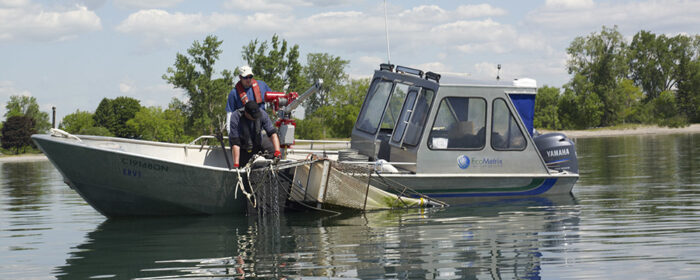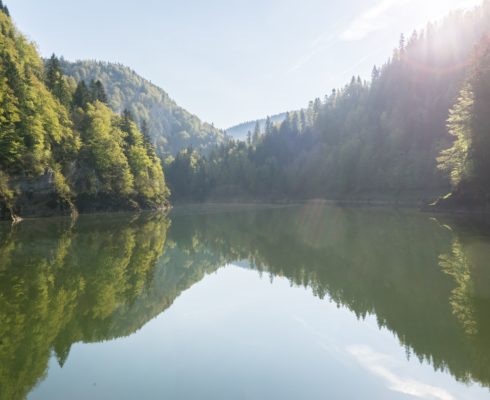Challenge
The Darlington Nuclear Generating Station (DNGS) is located on the Northshore of Lake Ontario. DNGS requires a large volume of cooling water to be taken in through their intake. The potential impact on benthic invertebrates and fish by the intake needed to be assessed according to the Environmental Risk Assessment (ERA) reviewed by the Canadian Nuclear Safety Commission (CNSC).
The nearshore environment of Lake Ontario in the vicinity of the intake is comprised primarily of large cobble and boulder substrates. These substrates are not easily sampled using conventional methods. As a result, the benthic community surrounding the intake location and corresponding reference areas were assessed using collections via benthic sled.
Background
DNGS was required by CNSC to follow-up on recommendations from the most recent ERA for the station. One of these recommendations was to assess the potential impact that the DNGS intake may have on the aquatic community. The plant requires large volumes of cooling water to operate and the intake of this water was identified as having a large potential impact in the nearshore environment.
The DNGS intake is a state of the art porcelain capped submerged intake located in 10 m of water. This location reduces the likelihood of impacts to fish through drawing water but make sampling of the other components of the aquatic community challenging. The challenge of sampling the benthic community in an area dominated by cobble and boulder was addressed through the use of the benthic sled.
 Ecometrix experts in the field
Ecometrix experts in the field
Project
Ontario Power Generation retained Ecometrix to help design and use a benthic sled to assess the potential impact of the DNGS intake on the benthic invertebrate and fish communities along the Northshore of Lake Ontario.
The substrates in the study area did not lend themselves to conventional sampling techniques and therefore we worked closely with OPG staff to design, build and use a paired benthic sled to collect the benthic community within the study area. Samples were collected from three depths near the intake as well as at two reference locations. Samples were also collected during the day and at night to determine potential diurnal effects on impact. Our findings were documented and presented to the CNSC for review.
Outcome
Finding a solution to sampling the substrates in this environment required a creative approach. Using the benthic sled to collect the aquatic community samples demonstrated to CNSC that the DNGS intake does not have a negative effect on the invertebrates or fish.










